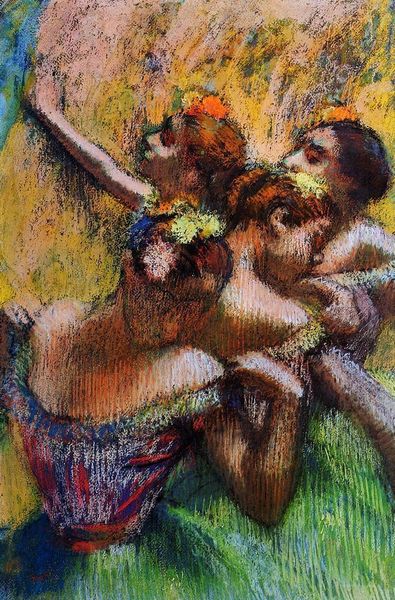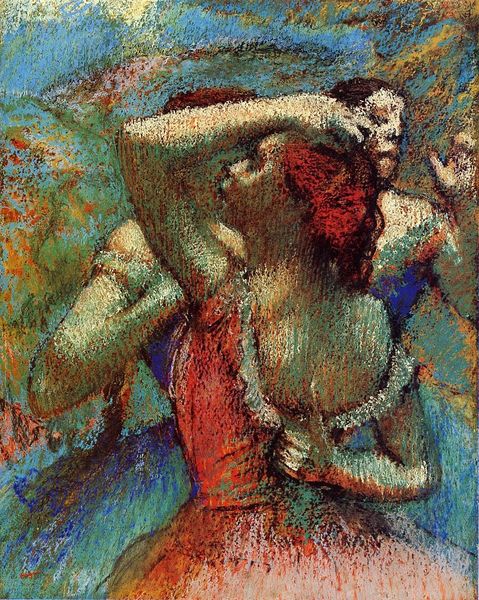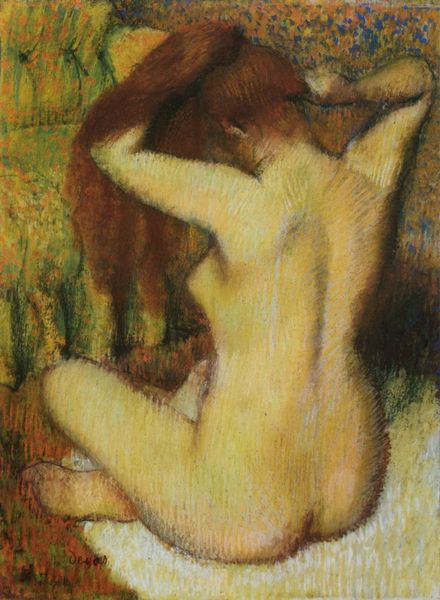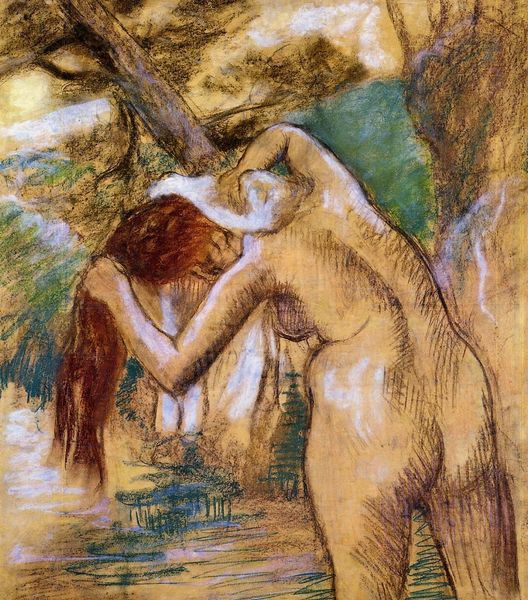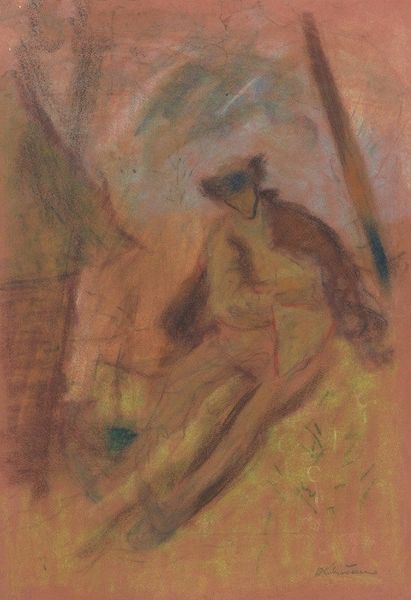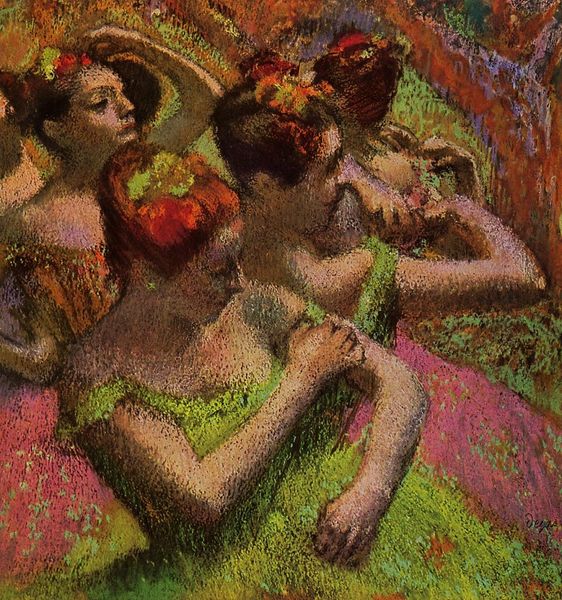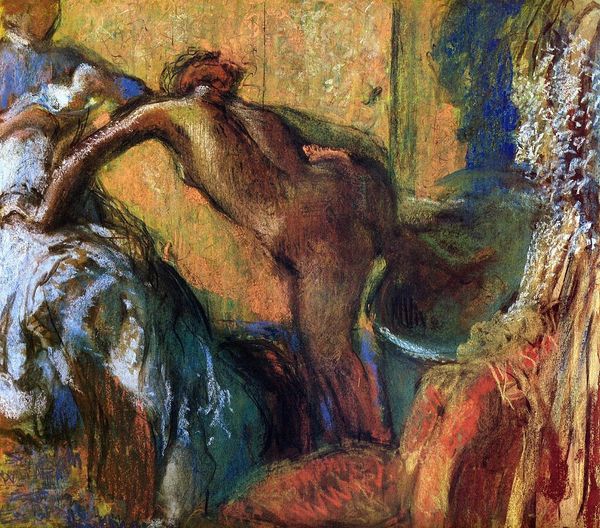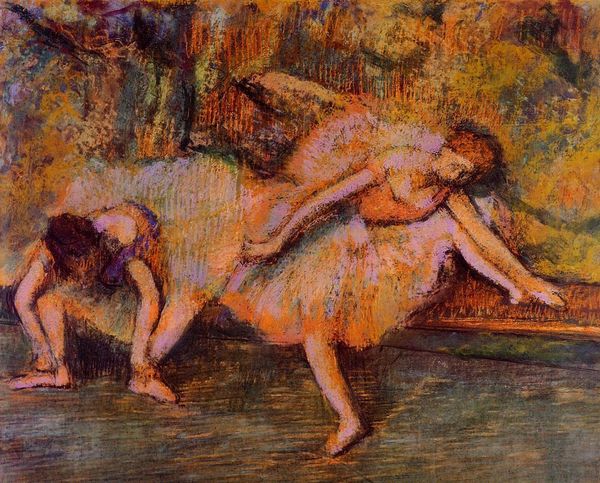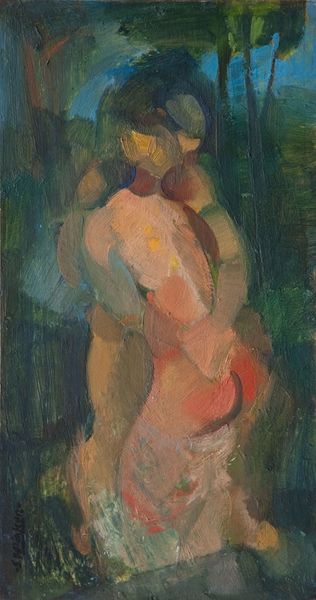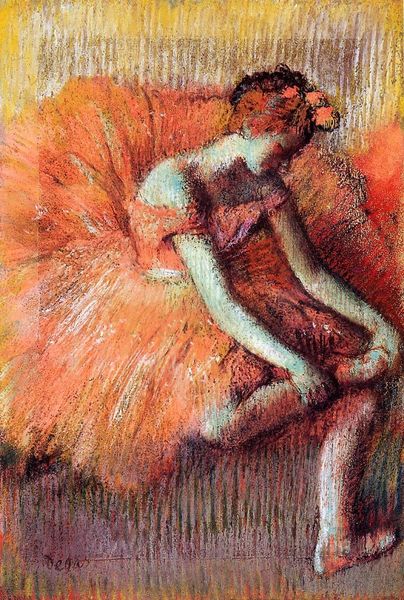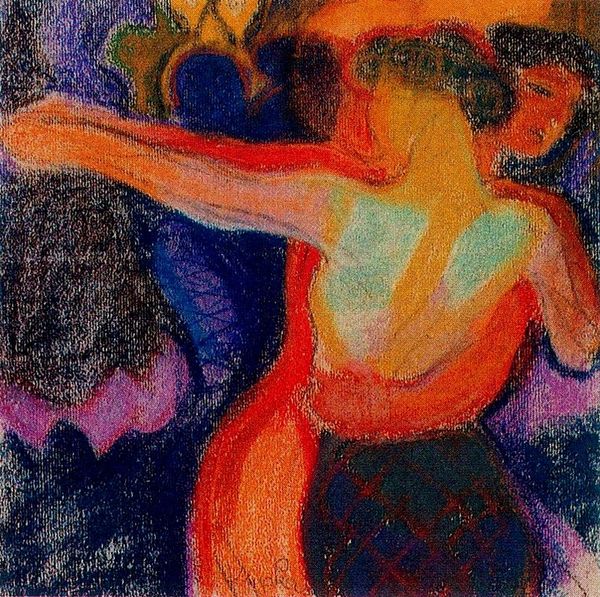
Copyright: Public Domain: Artvee
Art Historian: Here we have Edgar Degas’s pastel on paper, titled "Dancers," created around 1896. Curator: Oh, wow. The immediate impression is of something fleeting and intimate, caught in a backstage glimpse. The off-kilter composition, the vivid but muted colors... there's an intense but vulnerable energy. Art Historian: Degas was, of course, fascinated by the ballet, a recurring theme in his oeuvre. Beyond capturing their performances, he was really drawn to depicting dancers in these more private, behind-the-scenes moments. Curator: Yes, and you can feel that here. The piece really pulls me in. The pastel strokes are so loose, so raw, but still convey so much about these figures and the social hierarchies and physical expectations that dictate a ballet dancer’s life, let alone what is unseen, expected, and demanded. The visible traces of work in the layers, it really amplifies that sense of the hidden labor and rigorous preparation that underpinned their apparent grace. Art Historian: He's certainly presenting an informal perspective. Look how he uses cropped figures and asymmetrical compositions, influenced by Japonisme, that was popular at that time. It offers the viewer what seems to be a spontaneous, unguarded moment, though these were deliberately constructed. Degas showed us how industrial modernity’s changing social relations manifested in this era. Curator: Precisely. And it provokes all sorts of questions, right? What is he actually showing us about their interior lives, or the nature of spectacle? As we look, it’s so crucial to think about what ballet represented socially at the time and for whom – beyond these dancer's bodies. Also, considering that there are rumors that the artist held misogynist beliefs. I feel as if I must reflect, beyond its painterly merits, about how these views, might have unconsciously filtered into this representation of vulnerable ballerinas during their intimate down time. Art Historian: It does make us consider the gaze he employs and the power dynamics inherent in it. These dancers may seem accessible but were ultimately framed and defined by the prevailing standards of his era, whether intentionally or not. Curator: Thinking through that tension adds another complex layer to engaging with the piece, really making us wrestle with his perspective and our own as viewers. Art Historian: Well, it certainly leaves one pondering the artist's intentions versus the actual impact and reception of the artwork. It’s not a neutral representation, as his interests go beyond simple observation. Curator: Absolutely. Engaging with "Dancers" is an exercise in awareness, and understanding historical context, especially gendered and social narratives. I appreciate Degas work, in that respect that invites and challenges viewers into these reflections about culture.
Comments
No comments
Be the first to comment and join the conversation on the ultimate creative platform.
